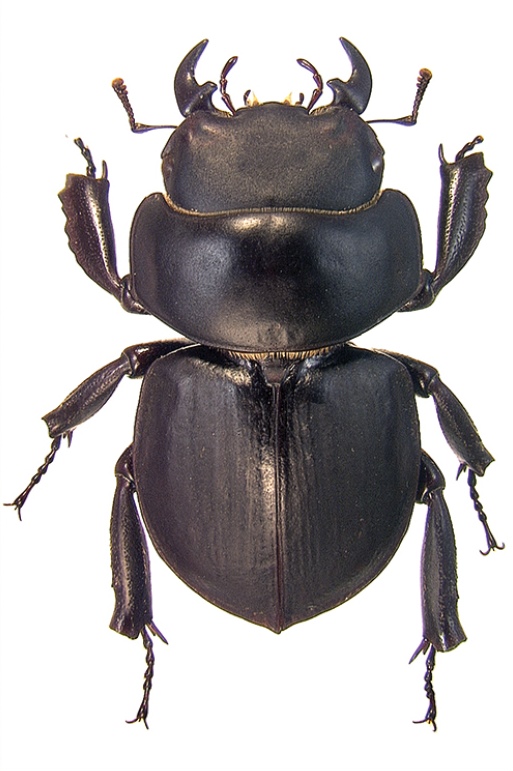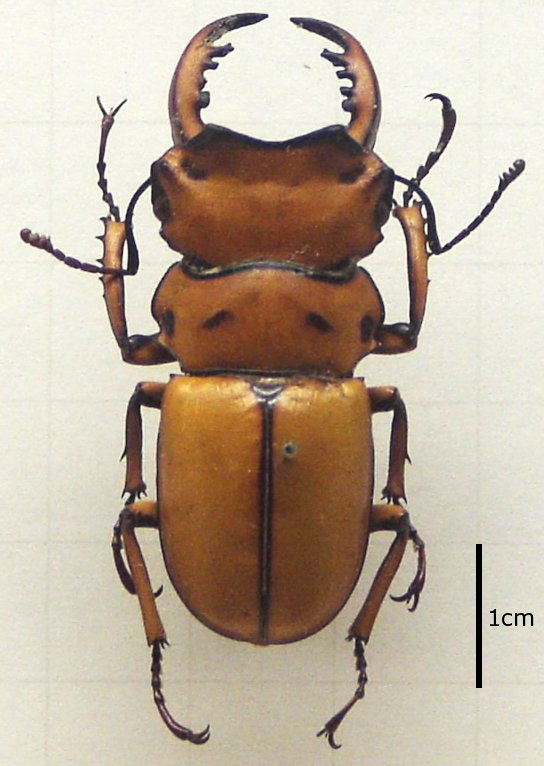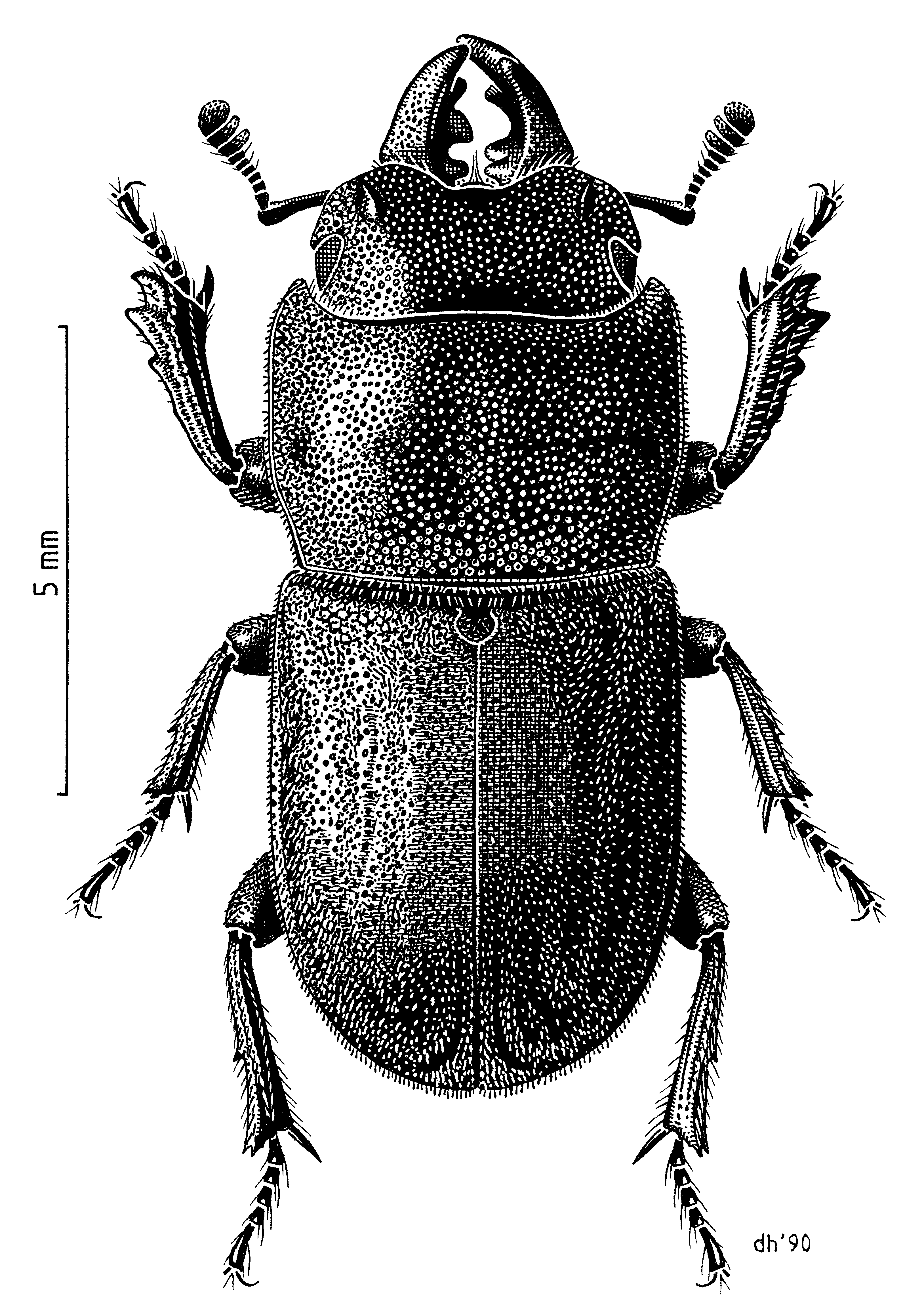|
Apterocyclus
''Apterocyclus'' is a genus of rare stag beetles in the family Lucanidae. There are about five described species in ''Apterocyclus''. The species of ''Apterocyclus'' are found only on the island of Kauai in the Hawaiian Islands The Hawaiian Islands ( haw, Nā Mokupuni o Hawai‘i) are an archipelago of eight major islands, several atolls, and numerous smaller islets in the North Pacific Ocean, extending some from the island of Hawaii in the south to northernmost Kur ..., and are the only scarabaeoid beetles native to the Hawaiian Islands. The ''Apterocyclus'' are flightless stag beetles, ranging in size from 14 to 23 mm. There are five recently extant species, although some may now be extinct. More than 130 specimens of Apterocyclus were studied between 1871 and 1922, but very few specimens have been found and placed in institutional collections over the past 50 years. Only three of the five species have been confirmed living since the late 1960s (''Apterocyclus honolulue ... [...More Info...] [...Related Items...] OR: [Wikipedia] [Google] [Baidu] |
Apterocyclus Honoluluensis
''Apterocyclus honoluluensis'', the Kauai flightless stag beetle, is a species of stag beetle in the family Lucanidae. It is found on the island of Kauai in the Hawaiian Islands. ''Apterocyclus honoluluensis'' is historically and currently the most commonly found species of ''Apterocyclus'', and is known from various locations on Kauai. It is the smallest member of the genus, at a size of 14-17 mm, rarely up to 21 mm. The larvae were once found in large numbers in soil that contained the decomposing trunks of the tree Acacia koa ''Acacia koa'' or commonly known as koa is a species of flowering tree in the family Fabaceae. It is endemic to the Hawaiian Islands, where it is the second most common tree. The highest populations are on Hawaii, Maui and Oahu. Name The name .... The larvae is sensitive to heat, and can be killed by high temperatures. Adults of ''Apterocyclus honoluluensis'' have been victims of heavy predation by the mice introduced to the Hawaiian Islands. In ... [...More Info...] [...Related Items...] OR: [Wikipedia] [Google] [Baidu] |
Apterocyclus Kawaii
''Apterocyclus kawaii'' is a species of stag beetle in the family Lucanidae. It is found on the island of Kauai in the Hawaiian Islands. Only two specimens of this species are known. One was collected in 1978 in the Makaweli area of Kauai. The other was collected in 1996, on a Kauai footpath at 1000m elevation, damaged and apparently stepped on. It was discussed in a 1997 paper as the rediscovery of ''Apterocyclus honoluluensis''. ''Apterocyclus kawaii'' can be identified by its distinctive mandibles and front tibia The tibia (; ), also known as the shinbone or shankbone, is the larger, stronger, and anterior (frontal) of the two bones in the leg below the knee in vertebrates (the other being the fibula, behind and to the outside of the tibia); it connects .... References Further reading * External links * Lucaninae Beetles of Oceania Insects of Hawaii Endemic fauna of Hawaii Beetles described in 2014 {{lucanidae-stub ... [...More Info...] [...Related Items...] OR: [Wikipedia] [Google] [Baidu] |
Apterocyclus Palmatus
''Apterocyclus palmatus'' is a species of stag beetle in the family Lucanidae. It is found on the island of Kauai in the Hawaiian Islands. Five specimens of ''Apterocyclus palmatus'' were found on the island of Kauai in the Hawaiian Islands in 1919, at an elevation of 4,000 feet. They were originally described as a subspecies of ''Apterocyclus honoluluensis'', but are now considered a separate species. No specimens have recently been discovered, and the species may now be extinct. ''Apterocyclus palmatus'' are 22–23 mm in length, and are identified by their long mandibles that have no internal teeth, and the distinctive shape of their front tibia The tibia (; ), also known as the shinbone or shankbone, is the larger, stronger, and anterior (frontal) of the two bones in the leg below the knee in vertebrates (the other being the fibula, behind and to the outside of the tibia); it connects .... References Further reading * External links * Lucaninae Beetles of ... [...More Info...] [...Related Items...] OR: [Wikipedia] [Google] [Baidu] |
Apterocyclus Munroi
''Apterocyclus munroi'' is a species of stag beetle in the family Lucanidae. It was found on the island of Kauai in the Hawaiian Islands The Hawaiian Islands ( haw, Nā Mokupuni o Hawai‘i) are an archipelago of eight major islands, several atolls, and numerous smaller islets in the North Pacific Ocean, extending some from the island of Hawaii in the south to northernmost Kur ... in 1897. Four specimens of ''Apterocyclus munroi'' were collected on Kauai in 1897, and the species description was published in 1908. No specimens have been identified since 1897, and the species may now be extinct. References Further reading * External links * Lucaninae Beetles of Oceania Insects of Hawaii Endemic fauna of Hawaii Beetles described in 1908 {{lucanidae-stub ... [...More Info...] [...Related Items...] OR: [Wikipedia] [Google] [Baidu] |
Apterocyclus Waterhousei
''Apterocyclus waterhousei'' is a species of stag beetle in the family Lucanidae. The rare, flightless beetle is found only on the island of Kauai in the Hawaiian Islands The Hawaiian Islands ( haw, Nā Mokupuni o Hawai‘i) are an archipelago of eight major islands, several atolls, and numerous smaller islets in the North Pacific Ocean, extending some from the island of Hawaii in the south to northernmost Kur .... It has been reported in several locations on the island in recent years. References Further reading * External links * Lucaninae Beetles of Oceania Insects of Hawaii Endemic fauna of Hawaii Beetles described in 1908 {{lucanidae-stub ... [...More Info...] [...Related Items...] OR: [Wikipedia] [Google] [Baidu] |
Lucaninae
The Lucaninae comprise the largest subfamily of the stag beetles (Lucanidae). Characteristics include partial to complete division of the eyes by a canthus, geniculate antennae, and distinctly separated coxae. The body is typically elongated and slightly flattened. Genera Some notable species are also listed: * '' Aegognathus'' * '' Aegus'' * '' Agnus'' * '' Allotopus'' * '' Amneidus'' * '' Andinolucanus'' * '' Aphanognathus'' * '' Apterocyclus'' * '' Apterodorcus'' Arrow, 1943 * '' Auxicerus'' * '' Bartolozziolucanus'' * '' Beneshius'' * '' Bomansius'' * '' Brasilucanus'' * '' Cacostomus'' ** '' C. squamosus'' * '' Calcodes'' * '' Cantharolethrus'' ** '' C. luxeri'' * '' Capreolucanus'' * ''Cardanus'' * '' Casignetus'' * '' Charagmophorus'' * '' Chewlucanus'' * '' Chiasognathus'' * '' Cladophyllus'' * '' Cladognathus'' * '' Colophon'' * '' Cyclommatus'' ** '' C. scutellaris'' * '' Dendezia'' * '' Diasomoides'' * '' Dinonigidius'' * '' Dorculus'' * '' Dorcus'' * '' Dynod ... [...More Info...] [...Related Items...] OR: [Wikipedia] [Google] [Baidu] |
Charles Owen Waterhouse
Charles Owen Waterhouse (19 June 1843 – 4 February 1917) was an English entomologist who specialised in Coleoptera. He was the eldest son of George Robert Waterhouse. Waterhouse was an Assistant Keeper at the Natural History Museum, London, British Museum (Natural History), London. He wrote the Buprestidae part of Frederick DuCane Godman and Osbert Salvin's ''Biologia Centrali-Americana'' (1889) and very many papers on the worldwide beetle collections of the museum, describing hundreds of new species. He was President of the Royal Entomological Society from 1907 until 1908, and was appointed ISO in the 1910 Birthday Honours. Waterhouse died in February 1917 at the age of 73. References *Distant, W.L. 1917. [Waterhouse, C.O.] ''The Entomologist'' 50: 71–72BHL*Evenhuis, N.L. 1997. ''Litteratura taxonomica dipterorum (1758–1930)''. Volume 1 (A-K); Volume 2 (L-Z). Leiden, Backhuys Publishers. *Gahan, C.J. 1917. [Waterhouse, C.O.] ''Proceedings of the Entomological Soci ... [...More Info...] [...Related Items...] OR: [Wikipedia] [Google] [Baidu] |
Stag Beetle
Stag beetles are a family of about 1,200 species of beetles in the family Lucanidae, currently classified in four subfamilies.Smith, A.B.T. (2006). A review of the family-group names for the superfamily Scarabaeoidea (Coleoptera) with corrections to nomenclature and a current classification. The Coleopterists Bulletin 60:144–204. Some species grow to over , but most to about . Overview The English name is derived from the large and distinctive mandibles found on the males of most species, which resemble the antlers of stags. A well-known species in much of Europe is ''Lucanus cervus'', referred to in some European countries (including the United Kingdom) as ''the'' stag beetle; it is the largest terrestrial insect in Europe. Pliny the Elder noted that Nigidius called the beetle ''lucanus'' after the Italian region of Lucania where they were used as amulets. The scientific name of ''Lucanus cervus'' adds ''cervus'', deer. Male stag beetles are known for their oversize mandi ... [...More Info...] [...Related Items...] OR: [Wikipedia] [Google] [Baidu] |
Lucanidae
Stag beetles are a family of about 1,200 species of beetles in the family Lucanidae, currently classified in four subfamilies.Smith, A.B.T. (2006). A review of the family-group names for the superfamily Scarabaeoidea (Coleoptera) with corrections to nomenclature and a current classification. The Coleopterists Bulletin 60:144–204. Some species grow to over , but most to about . Overview The English name is derived from the large and distinctive mandibles found on the males of most species, which resemble the antlers of stags. A well-known species in much of Europe is ''Lucanus cervus'', referred to in some European countries (including the United Kingdom) as ''the'' stag beetle; it is the largest terrestrial insect in Europe. Pliny the Elder noted that Nigidius called the beetle ''lucanus'' after the Italian region of Lucania where they were used as amulets. The scientific name of ''Lucanus cervus'' adds ''cervus'', deer. Male stag beetles are known for their oversize mandi ... [...More Info...] [...Related Items...] OR: [Wikipedia] [Google] [Baidu] |
Kauai
Kauai, () anglicized as Kauai ( ), is geologically the second-oldest of the main Hawaiian Islands (after Niʻihau). With an area of 562.3 square miles (1,456.4 km2), it is the fourth-largest of these islands and the 21st largest island in the United States. Nicknamed the Garden Isle, Kauai lies 73 miles (117 km) across the Kauai Channel, northwest of Oahu. This island is the site of Waimea Canyon State Park and the Na Pali Coast State Park. The United States Census Bureau defines Kauai as census tracts 401 through 409 of Kauai County, Hawaii, which comprises all of the county except the islands of Kaʻula, Lehua and Niihau. The 2020 United States census population of the island was 73,298. The most populous town is Kapaa. Etymology and language Hawaiian narrative locates the name's origin in the legend of Hawaiiloa, the Polynesian navigator credited with discovery of the Hawaiian Islands. The story relates how he named the island of Kauai after a favorite son; ... [...More Info...] [...Related Items...] OR: [Wikipedia] [Google] [Baidu] |
Hawaiian Islands
The Hawaiian Islands ( haw, Nā Mokupuni o Hawai‘i) are an archipelago of eight major islands, several atolls, and numerous smaller islets in the North Pacific Ocean, extending some from the island of Hawaii in the south to northernmost Kure Atoll. Formerly the group was known to Europeans and Americans as the Sandwich Islands, a name that James Cook chose in honor of the 4th Earl of Sandwich, the then First Lord of the Admiralty. Cook came across the islands by chance when crossing the Pacific Ocean on his Third Voyage in 1778, on board HMS ''Resolution''; he was later killed on the islands on a return visit. The contemporary name of the islands, dating from the 1840s, is derived from the name of the largest island, Hawaii Island. Hawaii sits on the Pacific Plate and is the only U.S. state that is not geographically connected to North America. It is part of the Polynesia subregion of Oceania. The state of Hawaii occupies the archipelago almost in its entirety (includin ... [...More Info...] [...Related Items...] OR: [Wikipedia] [Google] [Baidu] |





